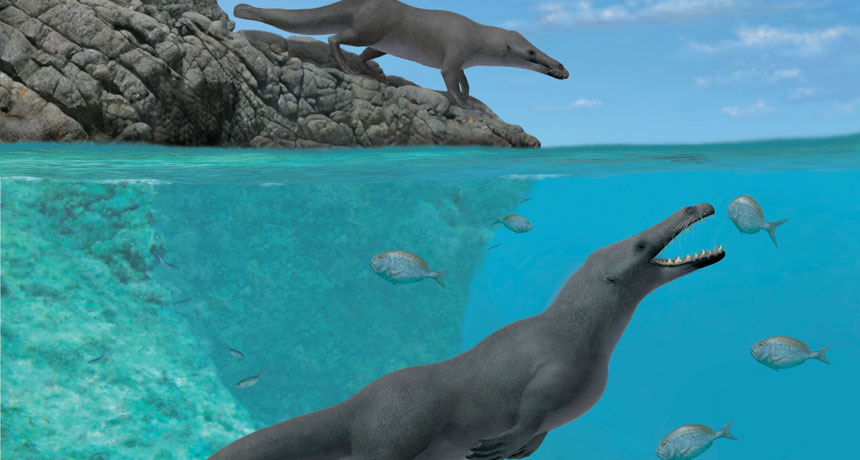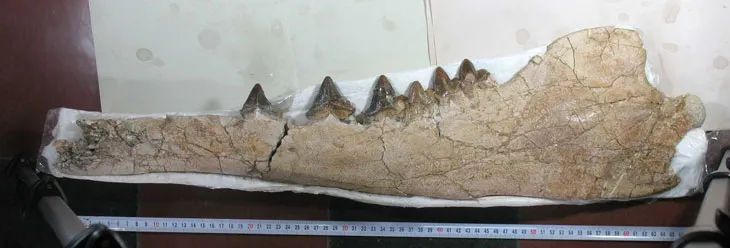Peruvian fossils yield a four-legged otterlike whale with hooves
The find is the oldest whale skeleton in the New World

BY LAND AND BY SEA The newly described Peregocetus pacificus (illustrated) had feet optimized for swimming and walking — though its long toes might not have made the animal a great runner.
A. Gennari








